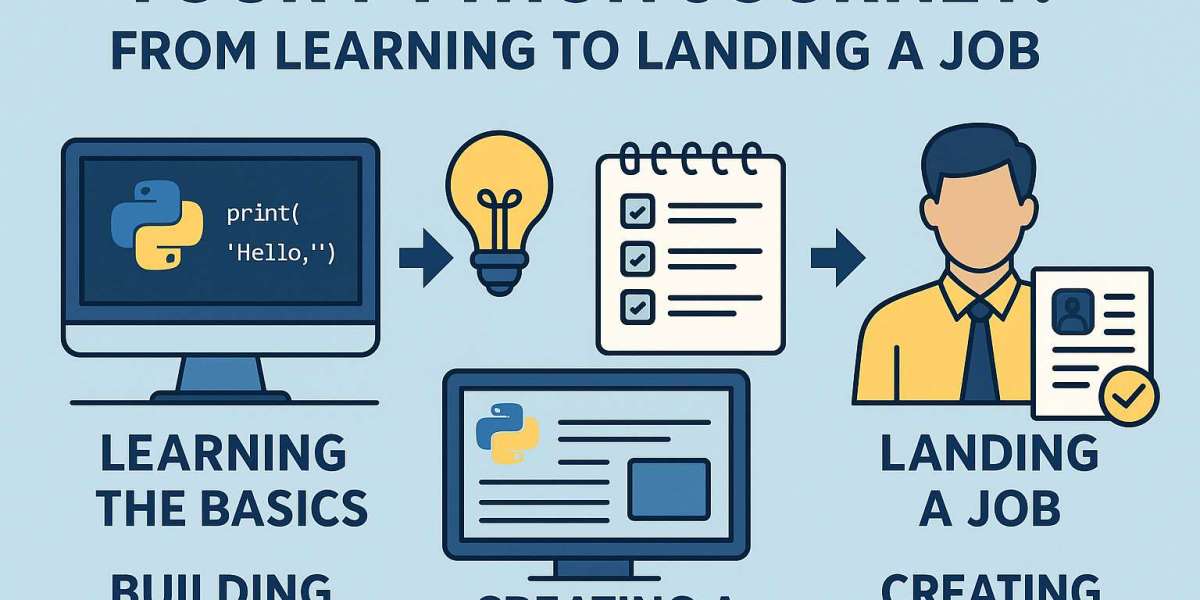Are you thinking of learning Python and wondering if it can actually lead to a job? You’re not alone. Python has become one of the most popular programming languages in the world—and for good reason. It's beginner-friendly, versatile, and in high demand across many industries.
In this guide, we’ll walk you through your Python journey—from starting with the basics to landing your first tech job.
Read More: Your Python Journey: From Learning to Landing a Job
Why Learn Python?
Before diving into the journey, let’s talk about why Python is worth your time:
- Beginner-friendly syntax: Easy to read and write.
- Wide applications: Web development, data science, automation, machine learning, and more.
- High demand: Python is one of the top skills employers look for in developers.
- Strong community support: Tons of free resources, libraries, and forums.
Step 1: Start with the Basics
Every journey starts with a single step. For Python, that means understanding the fundamentals:
- Variables and Data Types
- Loops and Conditionals
- Functions
- Lists, Tuples, and Dictionaries
? Recommended resources:
- Python.org Beginner’s Guide
- FreeCodeCamp
- Codecademy
Step 2: Work on Small Projects
Once you know the basics, start building small projects. This helps reinforce your knowledge and gives you something to show on your resume or GitHub.
? Beginner project ideas:
- Calculator app
- To-do list
- Number guessing game
- Simple web scraper
Don’t worry about perfection—focus on finishing.
Step 3: Learn Libraries and Frameworks
Depending on your career goals, you’ll want to learn popular Python libraries:
- For Data Science & ML: NumPy, pandas, scikit-learn, Matplotlib
- For Web Development: Flask, Django
- For Automation: Selenium, BeautifulSoup, PyAutoGUI
? Tip: Pick a path and go deep instead of trying to learn everything.
Step 4: Build a Portfolio
A portfolio shows employers what you can do. Include 3–5 projects that demonstrate your skills and problem-solving ability.
?️ What to include:
- Project description
- Your role and what you learned
- A link to the GitHub repo
Bonus: Write blog posts about your projects. It shows passion and communication skills!
Step 5: Practice Coding Interviews
Technical interviews are part of most job applications. Start practicing early.
? Where to practice:
- LeetCode
- HackerRank
- Codewars
- Interview Cake
Start with easy questions and gradually move up in difficulty.
Step 6: Start Applying for Jobs
Now it’s time to put your skills to the test! Look for entry-level roles such as:
- Python Developer
- Junior Software Engineer
- Data Analyst
- QA Automation Engineer
✅ Job boards to check:
- Indeed
- Glassdoor
- Stack Overflow Jobs
Customize your resume for each role and include a short, compelling cover letter.
Step 7: Keep Learning and Networking
Even after landing a job, the learning doesn’t stop. Tech evolves quickly, and staying updated is key.
? Ways to grow:
- Join Python communities (Reddit, Discord, Slack groups)
- Attend meetups or tech events
- Contribute to open-source projects
Visit Here: https://www.fusion-institute.com/from-hello-world-to-hired-your-journey-through-python
Final Thoughts
Your Python journey won’t be the same as everyone else’s, and that’s okay. What matters is staying consistent and curious. From learning your first “Hello World” to accepting a job offer, every step gets you closer to your goal.



